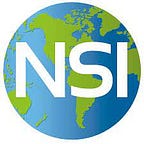How Web Surveillance Programs Work in America
By Paul Rosenzweig, NSI Advisory Board Member
Michael Hayden, the former director of the National Security Agency (NSA), tells an anecdote that serves to explain a bit about why technological change has driven changing surveillance activities and capabilities. Here’s how he explains it. Back in the Cold War, the Soviet Union controlled its nuclear missiles through the country’s Strategic Rocket Force.
The rocket force’s communications were transmitted on a dedicated, secure microwave system. Orders were given in Moscow and transmitted over the Ural Mountains to the missile silos that were on the plains of Russia, east of the mountains. The NSA devoted immense efforts to penetrate the security of those communications.
And to the extent that they succeeded, the NSA also devoted great effort to listening for important words within those communications — words like launch or fire, for example. By the end of the Cold War, according to General Hayden, the NSA had seriously compromised the Soviet Union’s communication networks. And though it’s speculative to ask the question, it’s unlikely that many, if any, American civil libertarians were concerned with that penetration.
This is a transcript from the video series The Surveillance State: Big Data, Freedom, and You, by NSI Advisory Board Member Paul Rosenzweig and was originally published in the Great Course Daily on February 26, 2021. Read the full transcript here.
